Matador Network's Blog, page 741
November 24, 2020
World War II historic sites hikes

World War II memorial sites around the world pay homage to the fight for freedom and against fascism. Many are in wooded locations that offer a respite into nature, but only some actually offer a look at mountain paths used to escape war’s atrocities or munition huts to store its weapons. From cannons to huts in Europe, US Pacific territories, and even the US mainland, these historical treks take you through nature while educating you on this grim but important past. These six hiking sites are a must-do for the military history buff with a good pair of hiking boots.
1. The Freedom Trail — France

Photo: Michele Damini/Shutterstock
We start with a major undertaking in The Freedom Trail in France and Spain. It’s estimated that more than 780 people escaped German oppressors via a high-altitude ascent and traverse over the Pyrenees that has since become known as The Freedom Trail. The journey began in the Ariège department of France and crossed the intimidating and potentially deadly mountains into northern Spain. Thousands of French and Jews escaped over the Pyrenees to safety in Spain in the years following the Nazi invasion of France, establishing a series of routes over the mountains. This specific trail was commemorated as a historical hiking route in 1994 and runs over 36 miles.
Guided hiking tours are available via Adventure Creators and other tour operators. Most allow four to five days to do the hike, with the longest single-day stretch being about 12.5 miles. Tours take care of essentials like camping supplies and logistics, and they’re a great way to learn about those whose lives depended on a safe passage along the trail.
2. Papago Park — Arizona

Photo: Harry Beugelink/Shutterstock
Hikers in the Phoenix area can easily access Papago Park. Now surrounded by suburban development, part of the Papago Park area was formerly known as Compound 1A. During World War II, Compound 1A held prisoners thought to be a severe threat to the United States: Nazis, escaped convicts, and other troublemakers. Twenty-five of the prisoners escaped and attempted to flee to Mexico, an event documented in the book The Great Desert Escape by Keith Floyd.
Most visitors to Phoenix and even many residents don’t realize that this normal-looking residential area was previously a renowned American military holding site. Papago Park is now home to many hiking and biking trails that traverse the park, including the quick and easy half-mile Nature Trail and the longer, 2.7-mile Elliot Ramada Loop Trail. The current Elks Lodge adjacent to the park served as a ranger station during the war.
3. Mount Alifan, Fort Nuestra, and surrounding sites — Guam

Photo: okimo/Shutterstock
To this day, Guam is a major US military outpost offering access to the far reaches of the Pacific. In the 1940s, Guam was a center of conflict between WWII’s Axis and Allied powers. The island is home to many important historical sites, but for hikers, Mount Alifan offers a peek into the bloody battles that took place on the island. A series of trails lead to more than 30 historical WWII sites including caves and tunnels where soldiers were stationed and craters left by bomb blasts. You’ll also be able to take in views of other historical sites on the island from above.
Other places worthy of a visit on the island of Guam are Fort Nuestra, the site of a bloody portion of the Battle of Guam in 1944; Mount Chaco, where you can see a pre-war gun encasement and see an expansive island vista; and Sigua Falls, which requires a guide to visit but is among the most beautiful natural sites on the island.
3. World War II Heritage Trail — American Samoa

Photo: Brenda Smith DVM/Shutterstock
A brief but somewhat strenuous uphill jaunt on the World War II Heritage Trail in American Samoa leads hikers to abandoned cannons on a ridge overlooking the harbor below. While you’ll see the guns within about 15 minutes from the trailhead, those who wish to continue hiking can move onto other trails in the area including the Blunts Point Trail and Breakers Point Trail. The entire National Park of American Samoa, which encompasses the trail, is beautiful and offers a look into both the island and the lives of the soldiers stationed there. But the cannons themselves allow you to imagine what it was like for the soldiers in the moment, ready to ward off approaching hostile fighters. And the views are fantastic.
4. Baalsrud Cave — Norway
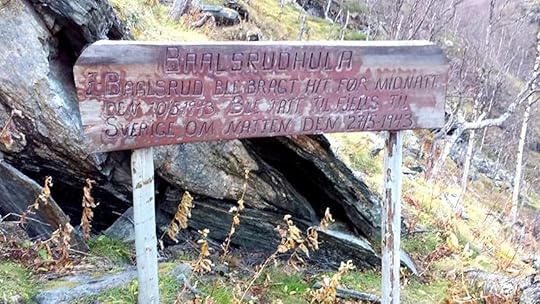
Photo: Jan Baalsrud/Facebook
Jan Baalsrud is legendary in Norway as a resistance fighter who famously escaped from the Germans during the war. After breaking free, Baalsrud hid in a cave at the top of the Manndalen Valley in the Arctic northern part of the country on his way to Sweden. Nowadays, hikers can follow part of his path and reach the cave via a detour off the valley’s cultural trail near Skáidejohka. The trail is about seven miles in length and takes about four hours.
While staying overnight in the Baalsrud Cave itself is not advised, there are nearby huts you can camp in that include an outdoor fireplace, a great way to position yourself for the short final stretch of the hike to the cave. The region’s tourism bureau, Visit LyngenFjord, offers further information on the region.
5. Woodlands Conservancy — Louisiana

Photo: Woodlands Conservancy/Facebook
In the wetlands of Louisiana, not far from the New Orleans city center, is Woodlands Conservancy, a preserve of forested wetlands lined with hiking paths and migratory birds soaring overhead. The conservancy’s goal is to protect wetland environments for bird species and plant life, but hikers will find a bit of military history on the site as well. On the conservancy’s Bottomlands Trail, you’ll find several hut-like abandoned structures and 10 ammunition magazines that were active during World War II to store black powder ammunition. 
More like thisMuseumsA visit to Normandy brings D-Day to life beyond the beaches
The post Walk through World War II history on these hiking routes around the world appeared first on Matador Network.

Most beautiful places in Belgium

There are cities that travelers to the Old Continent will never pass on — London, Paris, Amsterdam, Prague — and others that they tend to forget entirely, to their detriment. Belgium’s many beautiful cities — with their historical architecture, grand market places, and Venice-like canals — might not be as well known as their next-door neighbors, but they have a rightful place on any Eurotrip itinerary. Instead of making a quick stop to Brussels before heading out to another well-known capital, take the time to explore the nooks and crannies of the small, multilingual, and multicultural nation at the heart of Western Europe — it’s filled with unexpected beauty that you won’t regret making a detour for.
1. Dinant
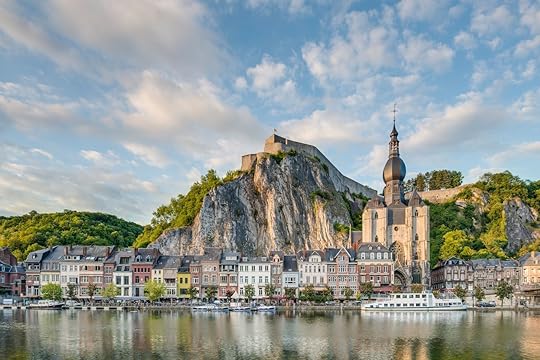
Photo: Anibal Trejo/Shutterstock
Despite having been devastated by German troops in 1914, a tragic event that saw more than one thousand houses burned down, Dinant is today one of the most beautiful cities in Belgium. Built along the River Meuse and against rocky cliffs, the city’s most recognizable and celebrated features are the citadel that dominates the colorful town from its outcrop and the large catholic church topped with an unusual onion dome. For an aerial view of the town and the landscape of the Ardènnes region, walk the 408 steps, or take the cable car, to the citadel. For a slower, more relaxing way to admire Dinant’s assets, take a sightseeing cruise along the river.
2. Bruges

Photo: Pajor Pawel/Shutterstock
Made cool in 2008 thanks to the now-iconic movie In Bruges featuring Colin Farell and Brendan Gleeson, Bruges’ historic city center has been a UNESCO World Heritage site since 2000 for its exceptionally well-preserved Gothic architecture. In the 15th century, Bruges became a commercial and cultural hub thanks to its large network of canals that wind through the city and connect it to the sea and the rest of Europe. Today, visitors can travel on those very same canals for a slow-paced, 30-minute sightseeing tour or get themselves a map and create their own walking tour to some of the most photogenic spots, such as the Groenerei canal and its romantic stone bridge. Another highlight is Rozenhoedkaai (the Quay of the Rosary) from where travelers can see some of the most beautiful brick and Gothic structures in all of Bruges, like the Tanners’ house. Strolling the large market square dominated by the impressive 13th-century belfry (which one can climb for great views of Bruges and its surroundings) is also one of the highlights of the gorgeous city.
3. Ghent
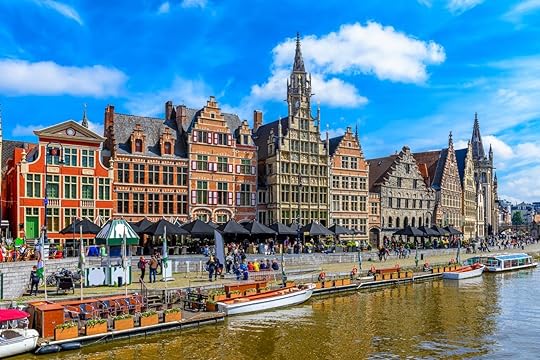
Photo: Catarina Belova/Shutterstock
Ghent was built about 1,400 years ago, and it shows in the best of ways. The pedestrianized city center is filled with historic structures, each as beautiful and impressive as the next. Walk around the canal quays for a good look at the Flemish Renaissance houses, reminiscent of the ones you’d see in Amsterdam, and check out the 1,000-year-old medieval fortress, the UNESCO World Heritage-listed belfry (which you can climb for a incomparable views of the city), and the many churches. These include the famous St. Nicholas located on the grand market place and Gothic St. Bavo’s Cathedral, which is filled with art treasures like the famous 1432 Van Eyck brothers painting “The Adoration of the Mystic Lamb.” For a different perspective on the city, take a boat tour or even a kayak tour.
4. Leuven

Photo: canadastock/Shutterstock
The highlight of the city of Leuven is undoubtedly its immense and ornate Gothic town hall whose facade is covered in 236 statues. Check out the outside and, if intrigued enough, partake in one of the daily guided tours to learn all about this fascinating building. The university library and tower, located on a large square, is also worth a visit as it is likely nothing like your local college. The outside is impressive enough, but it’s the reading room that takes the cake with its beautiful wooden interior, which you can visit daily. Make sure to walk up all the way to the university tower’s balcony for superb views of the city. When you’ve had your share of pretty buildings, head over to the world’s largest brewery, Brewery Stella Artois, located 15 minutes on foot from the city center. The brewery can be visited every Saturday between 1 PM and 3 PM.
5. Mons

Photo: NAPA/Shutterstock
Like the other Belgian cities on this list, Mons is full of beautiful historical structures like the 17th-century Baroque belfry (listed as a UNESCO Heritage site and which you can visit), the large and intricate St Waltrude’s Collegiate Church, the elaborate 15th-century town hall, and the city’s main square, the Grand-Place, which is considered the beating heart of Mons. Beyond those well-known attractions, Mons is full of street art pieces, from murals to sculptures. Download this street art map and mix up centuries-old architecture with a more modern take on the city for a refreshing visit.
6. Antwerp

Photo: Sean Pavone/Shutterstock
Antwerp was devastated during WWI, and large swathes of the city were rebuilt in the first half of the 20th century in a functional modernist style. The city is also Europe’s second-busiest seaport, so it has an undeniable industrial vibe that is reinforced by innovative architecture like that of the Port House (design by Zaha Hadid Architects) or the MAS Museum. But despite all this modernity, the old city center of Antwerp retains the charm of a time past whether it is in the medieval Steen Castle, the oldest building in Antwerp, or the Gothic Cathedral of Our Lady. The heart of the city, Grote Markt, a large market square that used to be the gathering point of merchants from around the world, remains as impressive today as it did centuries ago, with its cobblestone streets and Flemish Renaissance buildings, including its UNESCO World Heritage-listed town hall.
7. Durbuy

Photo: NAPA/Shutterstock
Known as “the smallest city in the world,” Durbuy’s historic city center has indeed only 400 lucky inhabitants, but it’s a well-known destination in Belgium, so you won’t be the only one walking its cobblestone streets and checking out the gorgeous stone and slate houses from the 17th and 18th centuries. Located in the wooded Ardènnes region, it’s surrounded by forests and valleys, so you can hike and camp in between cultural visits to Durbuy’s St. Nicholas Church and the Museum of Modern Art located in a former 16th-century wheat market hall. 
More like thisArt + Architecture40 European small towns that are straight out of a storybook
The post 7 dreamy cities that put Belgium on the must-visit list appeared first on Matador Network.

World’s first energy-positive hotel

This hotel in Arctic Norway is nothing like a traditional accommodation. Designed by Norwegian architecture firm Snøhetta, the sustainable Svart Hotel will be the world’s first entirely energy-positive hotel when it opens in 2022 — that means it will produce more energy than it uses. Svart will harness the sun’s energy using a solar panel-clad roof, powering the structure with the sun’s energy.
The hotel is currently under construction in the northern Meløy municipality, offering panoramic views of Holandsfjorden.
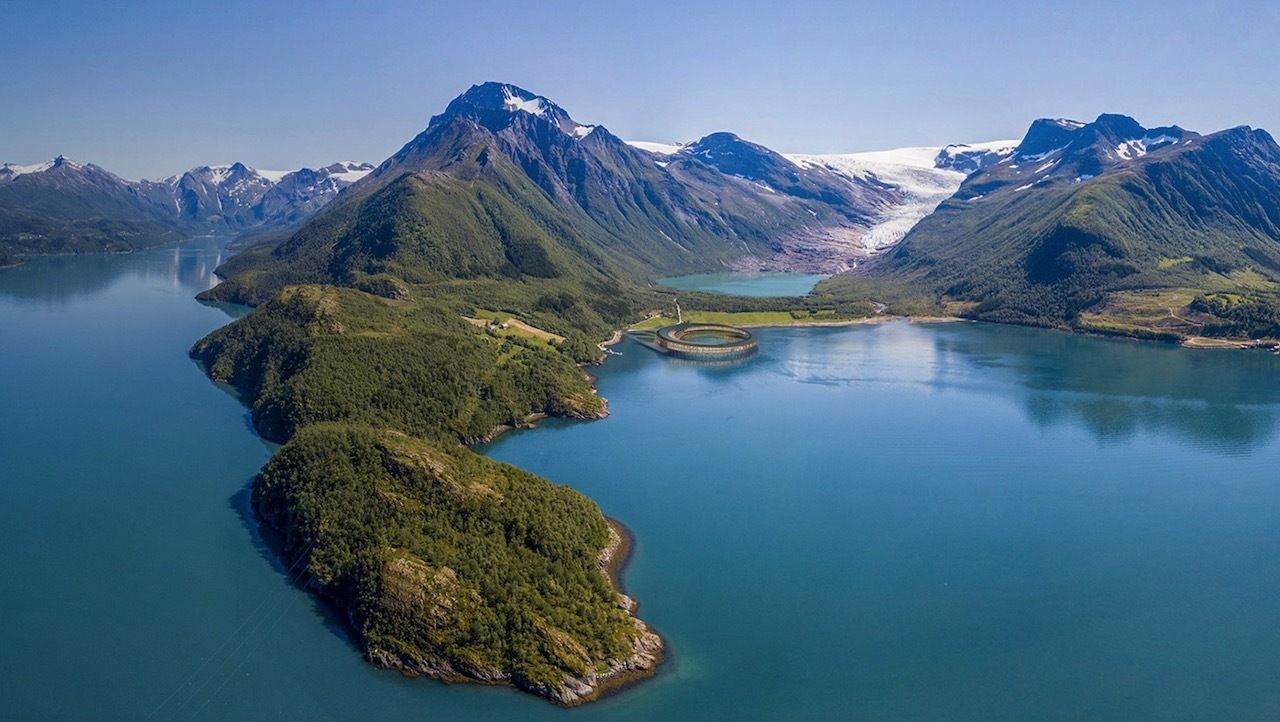
Photo: Svart
The hotel’s design was inspired by a Norwegian fiskehjell, a wooden structure used to dry fish, and a traditional Norwegian fisherman’s home called a rorbue. The unusual circular shape of the hotel will offer guests panoramic views of the surrounding fjord.
The hotel is intended to blend into its environment, and leave an extremely small footprint on the natural surroundings. Its solar panels are intended to harness enough solar energy to cover both the construction of the building and its daily operations, with the goal of going off-grid within its first five years of operation.
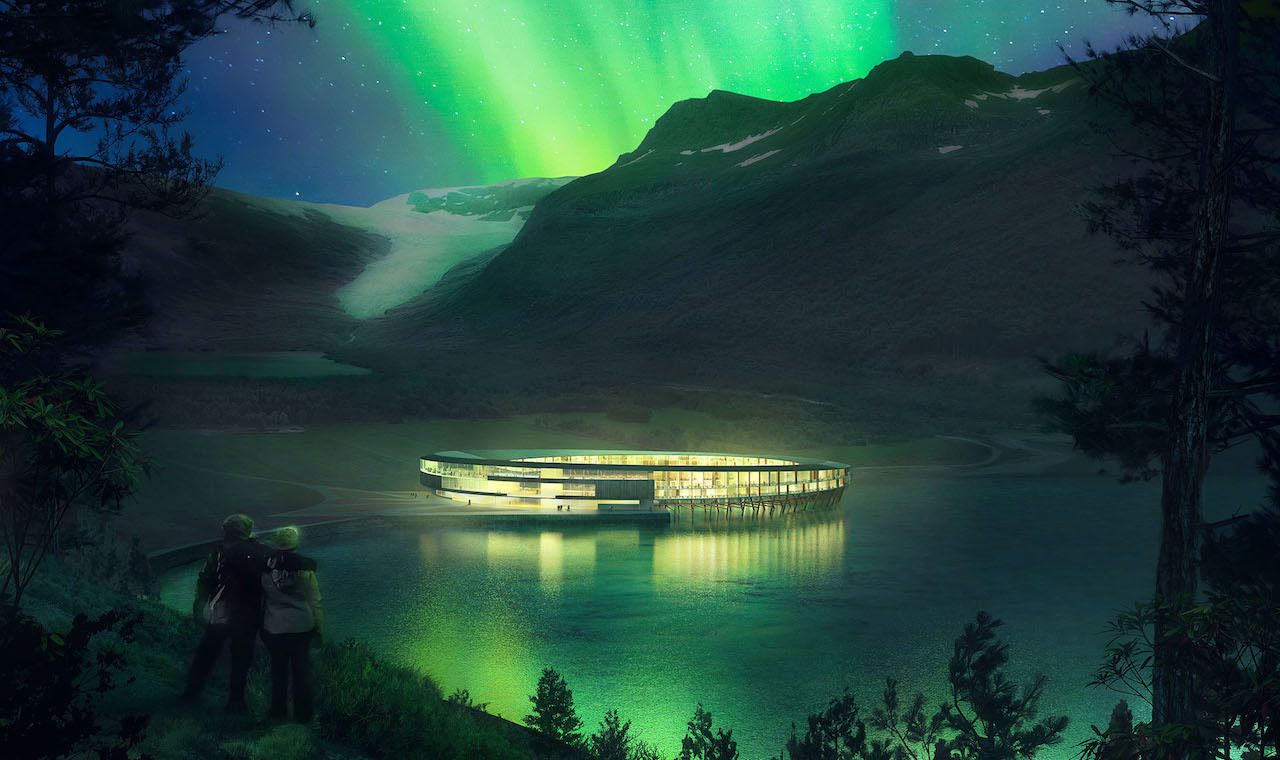
Photo: Svart
Svart will have 100 rooms, four restaurants with local tasting menus — many items will be grown at the on-site sustainable farm — and a 3,300-square-foot spa that has both indoor and outdoor facilities. 
More like thisTravelFrom cities to mountains, Scandinavia is at its most beautiful in winter
The post Arctic Norway will soon be home to the world’s first energy-positive hotel appeared first on Matador Network.

Driverless cars coming to Las Vegas

Since 2018, driverless tech company Motional has been operating a fleet of autonomous vehicles in partnership with Lyft in a testing capacity in Las Vegas. That means that self-driving vehicles were on the road, but there was a driver behind the wheel making sure everything was working fine. In total, the robotaxi service has provided 100,000 rides in Las Vegas.
Now, Motional is ready to take the next step toward a fully self-driving fleet of Level 4 vehicles, as the company has just been given the all-clear by the state of Nevada to get rid of the driver entirely.
Karl Iagnemma, president and CEO of Motional, said on the company’s website, “This has been a landmark year for both the driverless industry and Motional, and we’re quickly approaching another milestone: in the coming months, Motional will go fully driverless on public roads.”
The general public likely won’t see these cars until 2021, but for now they’re slated to be tested on closed courses to ensure safety. 
More like thisTheme ParksThe 11 best roller coasters and thrill rides in Las Vegas
The post Fully driverless cars could be coming to Las Vegas in 2021 appeared first on Matador Network.

Environmentally friendly gifts

With the barrage of greeting cards and the endless rolls of gift wrap, it’s hard to stay sustainable during the holidays. But there are plenty of ways to celebrate the season thoughtfully. Beyond sending e-cards and wrapping gifts in old newspapers or sheet music, you can also give eco-friendly gifts themselves. From the toys and books that are good for trees to personal care products that are healthy for you and the planet, these are the greenest — and also some of the all-around coolest — gifts you can give this year.
1. Adopt an animal in a child’s name

Photo: World Wildlife Fund
The World Wildlife Fund lets your child symbolically adopt an endangered animal, since you can’t actually bring a duck-billed platypus or a polar bear into your home. The NGO offers different giving levels, from $25 to $250, which come with an adoption certificate and a little stuffie in the form of that particular animal, be it a koala or snow leopard. And if it’s a monarch butterfly or a sockeye salmon you want to support, it even has toys for those species. If your child is younger, the token stuffie might be perfect, but if they’re a bit older, consider the virtual adoption kit. That means nothing is wasted and more of the gift goes to saving the animal in question. Sadly, there are plenty of animals to choose from.
2. Mugs and straws that last

Photo: EcoVessel/Facebook
This year, don’t just give a mug to the coffee-lover in your life. Give an EcoVessel, a mug that they can take with them wherever they go and that will keep the hot coffee hot and the iced coffee (or cold beer) cold. The 12-ounce Transit and the 16-ounce Double Barrel are both $24.95, and the 10-ounce Port mug comes in under $20. For under $5.95 each, the two-packs of colorful stainless steel straws, which come with their own cleaner brush, make for great stocking stuffers. EcoVessel uses no BPA or phthalates in its products, and donates five percent of its online sales to non-profits.
3. Thoughtful toys

Photo: PlanToys/Facebook
To say that PlanToys has been ahead of the game in producing sustainable toys would be an understatement. Four decades ago it set out to make toys with as little waste as possible, and the 70-plus awards it has received speak to its success. To make its beautiful toys — everything from a $25 set of condiments to a $90 kitchen set — it uses the wood from aged Thai rubber trees that are tapped out and destined to be destroyed anyway; and it even reuses the sawdust leftover from the production process to make more toys. It has had time to refine its process to be as green as possible, using biogas from old food waste and solar energy to run its factories. Add in organic dyes and recycled packaging with plant-based inks, and it’s hard to find a more eco-toy. You can search for these toys based on what you want for your baby or toddler: social-emotional development, fine motor skills, and so on.
4. Personal care that cares for the planet

Photo: Well Earth Goods/Facebook
Personal care products always make for lovely gifts, but they tend to come inside a plastic container. Many contain microplastics within them as well. To ensure your gifts this year have none of that, look to Well Earth Goods. From clever Beauty Kubes shampoo or conditioner squares that you simply crush in your hand with some water to reusable metal tins containing all-natural moisturizer, aftershave balm, or hair styling clay, these gifts let the recipient care for themselves and the planet at the same time. Ranging in price from $15 for a box of 27 shampoo squares to $33 for face cream, these gifts come in attractive recycled and plastic-free packaging.
5. Relentlessly sustainable, and hip, clothing

Photo: Outerknown/Facebook
The carefree style of surf clothing has long since ceased to be just for surfers, and what could be more appealing than a cozy flannel shirt being modeled by Kelly Slater, the most decorated surfer in history? Beyond winning 11 world surf championships, Slater has pioneered artificial waves and, now, an eco-clothing brand. Outerknown pursues what it calls “relentless sustainability,” making fabric and buttons from fishing nets, plastic water bottles, and the small plastics that pollute our oceans and beaches. The clothing is also made under conditions approved by the Fair Labor Association. The meticulous attention to sustainability does mean that hoodie could set you back $150, but if you’re ordering online for the first time, you’ll get a 15 percent discount.
6. The gag gift that’s good for your bum

Photo: Who Gives A Crap/Facebook
Everyone loves a good gag gift, but here’s the thing: Gag gifts tend to be a waste of plastic and packaging, just for a laugh. Giving somebody a box of toilet paper is pretty funny — but it’s a humorous gift that’s actually good for the planet and those who live on it. Who Gives a Crap’s dye- and scent-free TP isn’t just made from recycled paper; the company says it’s “as soft as unicorn kisses.” You can also buy sustainably sourced bamboo TP, which is like “wiping with clouds.” Both help to move us away from using toilet paper that’s destroying ancient boreal forests and which comes in quickly discarded plastic wrap. Moreover, 50 percent of Who Gives a Crap’s profits go directly into better sanitation and new toilets for people in need around the world. Two dozen rolls are $30, or you can get a box of 48 rolls for $48.
7. Tree-friendly books

Photo: Greystone Books/Facebook
Audio books are a gift for the whole family, since they can be enjoyed together on things like car trips. The Hidden Life of Trees, a bestseller written by German forest manager Peter Wohlleben and narrated by English actor Mike Grady, tells us so much about trees and how they care for each other that it will leave adults and kids over 10 with a sense of wonder — and a deep desire to protect our forests. You can then listen to Wohlleben’s later books, The Secret Wisdom of Nature and The Inner Life of Animals. Wohlleben has also written a version of his bestseller for younger kids called Can You Hear the Trees Talking? as well as Do You Know Where the Animals Live?, which are available for under $20. These lovely books, which inspire admiration for the natural world, are available from Canadian publisher Greystone Books, which prints all of its books on recycled paper.
8. Organic clothes for everyone

Photo: Winter Water Factory/Facebook
Many people think that the point of organic cotton kids’ clothing is to dress little ones in chemical-free clothing. It’s equally the point to promote the healthy planet that you want them to grow up in. Conventional cotton farming is pesticide-intensive and uses up to 20,000 gallons of water to produce just one T-shirt and a pair of jeans. Brooklyn-based Winter Water Factory knows this, and so it uses only 100 percent organic cotton — which is free of toxic chemicals, replenishes the soil, and uses less water — for all its onesies, pajamas, and even adult sweatpants in bold and whimsical prints.
9. A camping stove that makes energy

Photo: BioLite
While nominally for the person who receives it, a camp stove is a gift that benefits everyone in the family who goes camping — and more people are camping than ever. What makes BioLite’s award-winning CampStove 2, selling now for $112, so sustainable is that it actually turns fire into electricity. It takes everything from sticks to wood scraps and burns them, smokelessly, while you charge lights or cell phones. BioLite doesn’t only make great camping products, like the stoves or solar powered lights, but it also works to provide solar lighting and smokeless, safer cooking solutions for rural communities in Africa. 
More like thisOutdoor9 epic gift ideas for the outdoor adventure lover in your life
The post The most sustainable and thoughtful gift ideas for the whole family appeared first on Matador Network.

Floating luxury resort in Dubai

Plans have just been unveiled for a new floating resort near Dubai Marina, called the Sea Palace Floating Resort. Built by Seagate Shipyard, a ship-building company, the resort will be a floating luxury hotel surrounded by six floating houses, each of which can detach and sail independently.

Photo: Seagate Shipyard
The resort’s design was inspired by glass-bottom boats, as the houses will have transparent floors. Each house is operated by automatic smart systems, and include self-sterilizing air filters, solar energy panels, and garbage recycling systems.
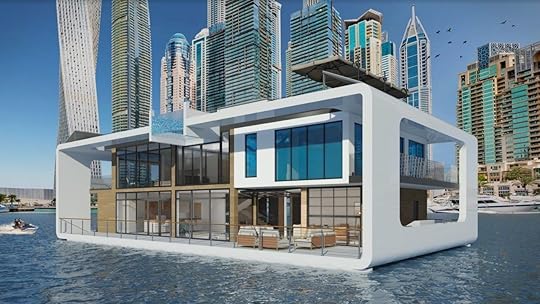
Photo: Seagate Shipyard
The houses will be spread over two floors, and be equipped with a balcony, rooftop, and a private swimming pool. They will also each have four ensuite bedrooms, a kitchen, and living room.

Photo: Seagate Shipyard
The project is currently about 65 percent complete and in the final stages of its construction.
It’s not quite clear exactly how much the Sea Palace will cost, but since it’s Dubai we’re talking about, you can bet it’s more than the average Holiday Inn Express. 
More like thisCultureWhy Dubai is the best destination for first timers to the Middle East
The post This floating luxury resort with see-through floors is coming to Dubai appeared first on Matador Network.

Iceland is launching a visa

There’s good news and bad news when it comes to Iceland’s impending reopening to travelers outside the EU and Schengen states. The good news is that Iceland is launching a remote-worker visa program that includes Americans, and allowing them to stay up to six months. The bad news is that you have to make $88,000 a year to qualify.
According to the official website Work in Iceland, “To be granted permission for an extended stay, the person in question must demonstrate an employment relationship with a foreign company (or verify self-employment in the country where they have a permanent residence) and meet the income and health insurance requirements.”
The ultimate goal is that long-term tourists will be able to stimulate the economy, and ideally these would be people who aren’t just scraping by staying at hostels. Iceland wants tourists to spend money at restaurants, take weekend trips around the country, and book Airbnbs or high-end hotels. That requires tourists with some extra cash, especially since the cost of living in Iceland is so high.
Former parliament member Asta Gudrun Helgadottir told Bloomberg, “I think the idea is to attract high-earning professionals from Silicon Valley or San Francisco to spend their money here, instead of there.”
It’s unclear when, exactly, this visa program will go into effect. The Work in Iceland website states that “more information will follow soon.” 
More like thisExpat LifeThe 15 best digital nomad visas from around the world
The post Iceland is launching a long-term visa for remote workers appeared first on Matador Network.

Metal monolith found in remote Utah

State employees counting sheep from a helicopter stumbled upon an unusual sight in a remote part of Utah: a metal structure between 10 and 12 feet high, made from some kind of metal, planted firmly in the ground.
Bret Hutchings, a helicopter pilot for the Utah Department of Public Safety, told the local KSL TV news station, “That’s been about the strangest thing that I’ve come across out there in all my years of flying.”
Hutchings was accompanied by biologists from the Utah Division of Wildlife Resource. The state employees were counting bighorn sheep in a remote part of southern Utah.
According to Hutchings, “One of the biologists is the one who spotted it and we just happened to fly directly over the top of it. He was like, ‘Whoa, whoa, whoa, turn around, turn around!’ And I was like, ‘What?’ And he’s like, ‘There’s this thing back there — we’ve got to go look at it!’”
Voir cette publication sur InstagramUne publication partagée par UtahDPSAeroBureau (@utahdpsaerobureau)
According to the first observations made, the mysterious metal monolith appears to have been intentionally placed in the area, not dropped from the sky.
Hutchings believes the object is an art installation inspired by the film 2001: A Space Odyssey. Some have compared it to sculptures by artist John McCracken, who died in 2011, though McCracken’s gallerist has not yet responded to requests for comments.
The flight crew has not revealed the monolith’s exact location for fear some might attempt to find it and get stuck in a dangerous environment. 
More like thisOutdoorThis road trip shows there’s even more to Utah than its national parks
The post Mysterious metal monolith found in remote Utah appeared first on Matador Network.

AA reverses wheelchair policy

A policy by American Airlines that banned some wheelchair users flying from 130 domestic airports has been reversed after review and criticism.
The policy, made in June 2020, restricted those who use powered wheelchairs weighing more than 400 pounds on certain domestic flights, and more than 300 pounds on others. With batteries included, many powered wheelchairs weigh more than the new capped load.
Due to COVID-19 travel restrictions, the new rules were brought into power without much noise, until John Morris of Wheelchair Travel shared his experience on his blog. Morris was denied boarding a flight in mid-October from Gainesville, FL, to Dallas, Texas, as his wheelchair weighed over 450 pounds.
The story was picked up in November by NPR, which received a statement from American Airlines after publication saying that it would look into the policy and review the situation.
After the review process, the airline is reversing the policy.
In a statement to NPR, American Airlines said, “After close consultation with our safety team and our aircraft manufacturer partners, we’ve eliminated the conservative weight limits that temporarily impacted our ability to carry some mobility devices and wheelchairs on our smaller, regional aircraft.” It then went on to say, “We are committed to learning from this as we redouble our focus on improving the travel experience for our customers with disabilities.”
Details about the updated policy can be read on Wheelchair Travel in which Morris stated that this is a “move in the right direction, but damage was done.” 
More like thisTravelDisabled and chronically ill travelers, it’s still possible to travel in post-COVID-19 world
The post American Airlines reverses wheelchair weight limit policy appeared first on Matador Network.

November 23, 2020
Qantas will require COVID-19 vaccine

It seems like just yesterday that airlines and destinations were rolling out COVID-19 testing requirements to travelers. Right when we got the hang of the whole testing thing, they’re likely to change the rules on us once again. With the imminent rollout of COVID-19 vaccines, proof of vaccination is likely to be required before boarding planes or arriving in destinations, and Australia’s Qantas Airlines has already introduced this new rule.
Alan Joyce, the airline’s CEO, said Qantas has been looking at different ways to open up safely to international travel, and vaccination is a huge part of that. “We will ask people to have a vaccination before they can get on the aircraft,” he said in an interview with Australia’s Nine Network, “for international visitors coming out and people leaving the country we think that’s a necessity.”
While Qantas is the first airline to speak publicly about such a measure, it almost certainly won’t be the last. “I think that’s going to be a common thing talking to my colleagues in other airlines around the globe,” said Joyce.
Right now the vaccination requirement is only being considered for international travelers coming to Australia. When it comes to domestic travel, things are still uncertain. “Whether you need that domestically,” Joyce said, “we’ll have to see what happens with COVID-19 in the market, but certainly for international visitors coming out and people leaving the country, we think that’s a necessity.” 
More like thisWellnessThese are the travel vaccines you actually need, according to an expedition doctor
The post Qantas becomes the first airline to require COVID-19 vaccination for passengers appeared first on Matador Network.

Matador Network's Blog
- Matador Network's profile
- 6 followers



